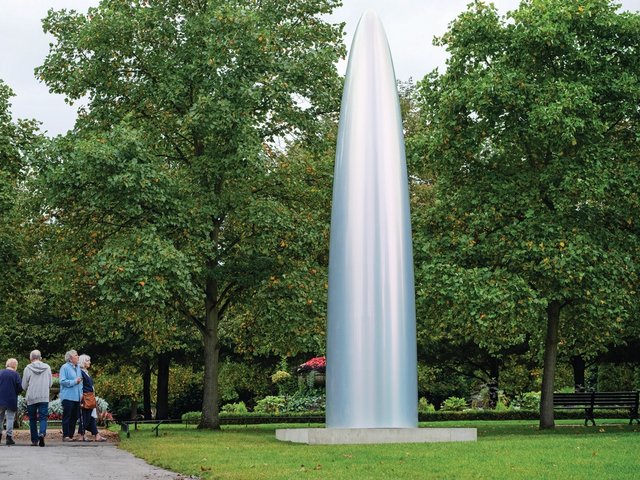Claude Lalanne, Choupatte Géante (2015-16)
Ben Brown Fine Arts, price in excess of €2m
Created especially for the Frieze Sculpture Park, this is Claude Lalanne’s largest sculpture to date, which is inspiring given that she is 91. With this surreal work, which fuses a cabbage with the feet of a chicken, she is drawing on a number of traditions, including French decorative arts and Baroque sculpture. It is hardly surprising, then, that Claude and her late husband François-Xavier are icons among fashion designers from Yves Saint Laurent to Marc Jacobs and Tom Ford.
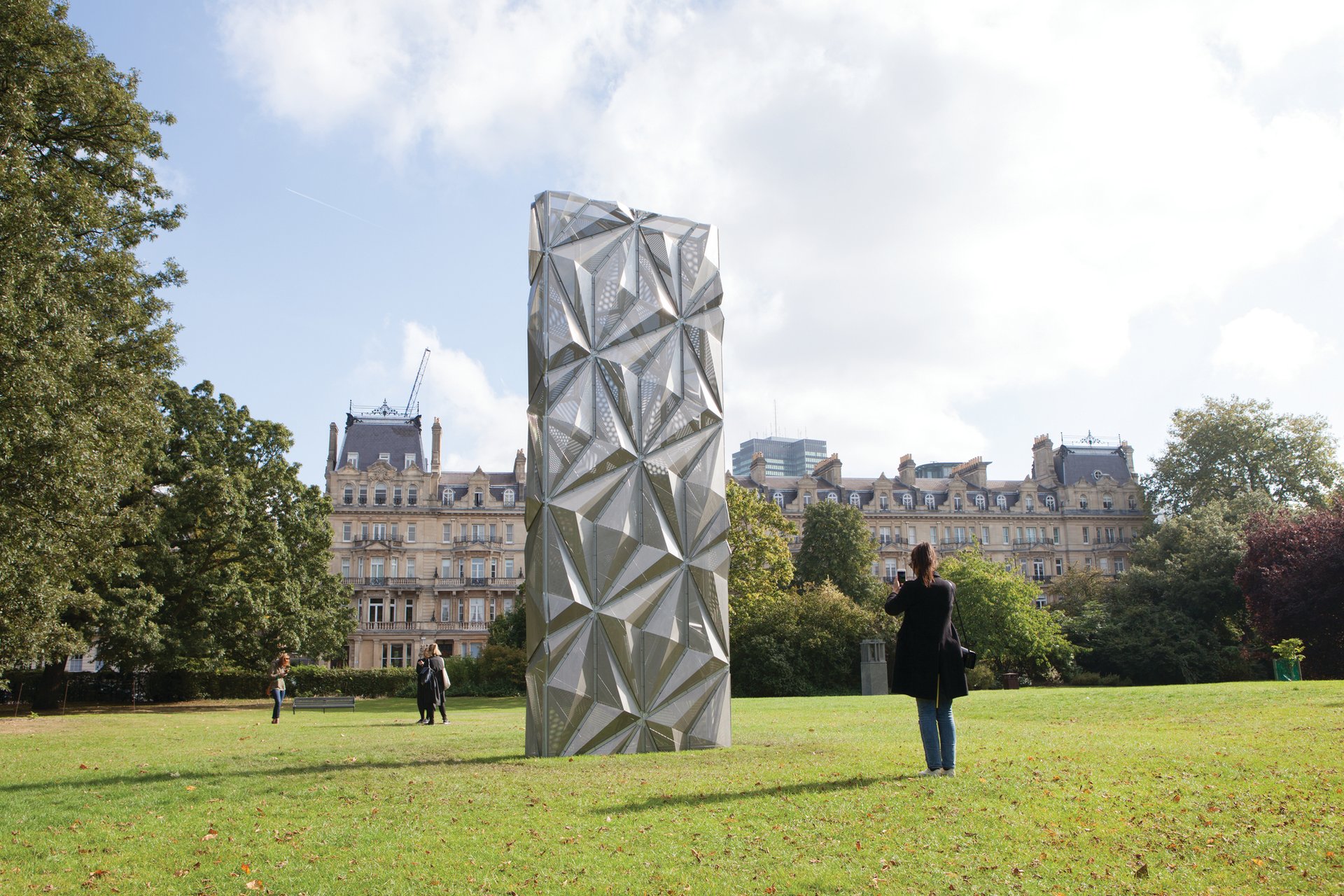
Conrad Shawcross, Monolith (optic) (2016)
Victoria Miro, £200,000-£300,000
This piece was created for the sculpture park to coincide with the unveiling of the artist’s Optic Cloak, a 49m-tall sculpture installed on the Greenwich Peninsula to disguise the chimneys of the new low-carbon Energy Centre. Conrad has researched camouflage, such as dazzle ships, and has worked out how to break the surface of a solid object. In this case, the solution is to have two sheets of mesh layered over one another at an angle to create a moiré effect, so the sculpture is fantastically dynamic. It’s carefully placed on an east-west axis, and the rising and setting sun acts on the object to effectively dematerialise it.
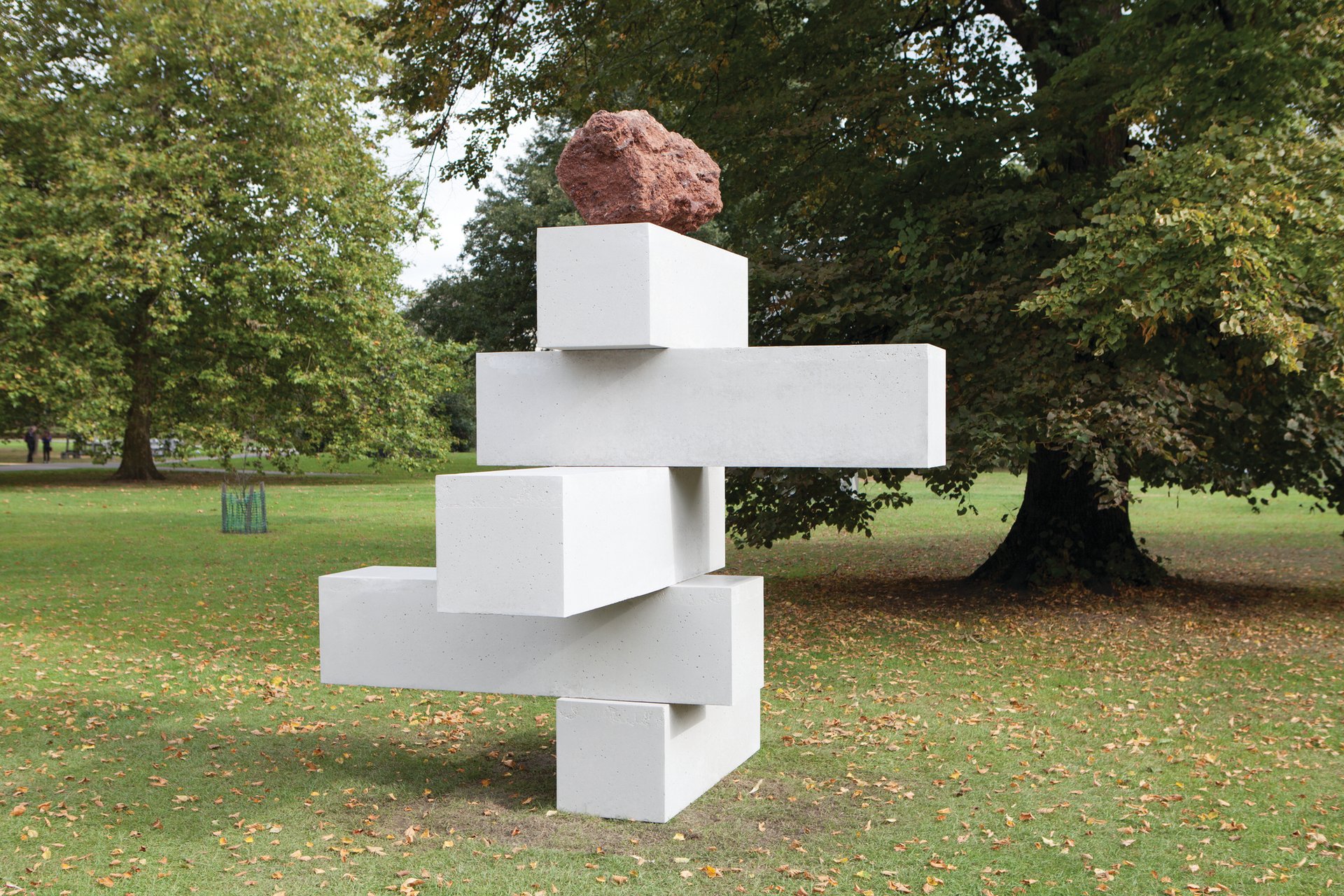
Jose Dávila, Joint Effort (2016)
Travesia Cuatro Gallery, $180,000
Jose trained as an architect and his aesthetic is influenced by Minimalist and Modernist architecture, as well as sculpture—here I am reminded of Donald Judd or Robert Morris. You get a strong sense of the mass, weight and density of the concrete blocks, each at 800kg, and balanced at 90 degrees to one another, so there is also a precariousness to the work. In contrast to these architectonic forms, a piece of natural volcanic rock from Spain sits on top of the sculpture—a dialogue between the manmade and the natural.
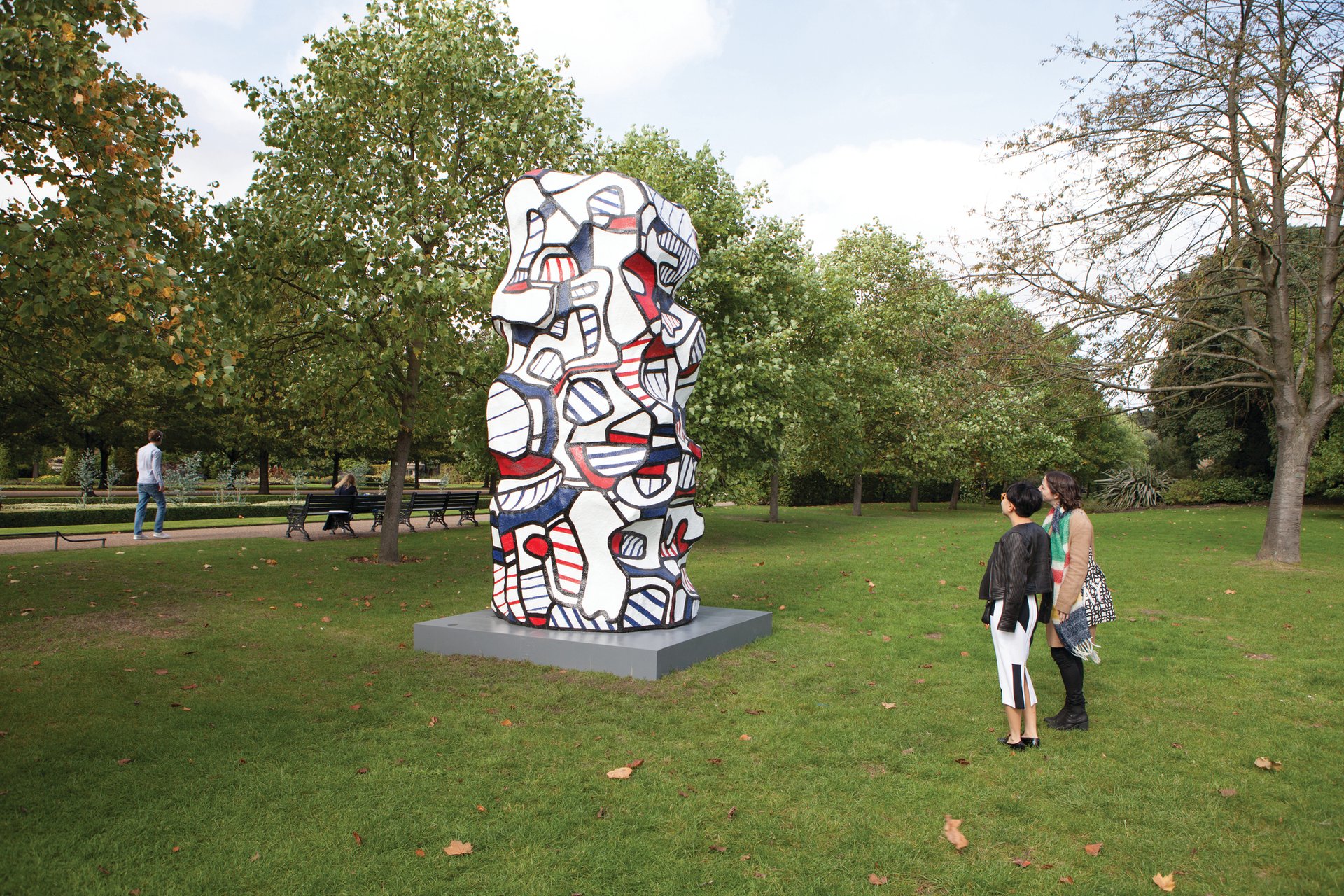
Jean Dubuffet, Tour aux récits (after maquette dated 19 July 1973) (1973)
Waddington Custot Galleries, $1.8m
This is Dubuffet going wild; it’s a piece made by someone who is completely confident in themselves and their work. The 4m-tall sculpture is an extension of the artist’s Hourloupe series, developed from a doodle he made while he was on the telephone. It’s like he’s taking a line for a walk, but this work was very much conceived as a sculpture in fibreglass. It is one of several blue-chip works on show in the sculpture park this year; others include pieces by Eduardo Paolozzi and Lynn Chadwick.
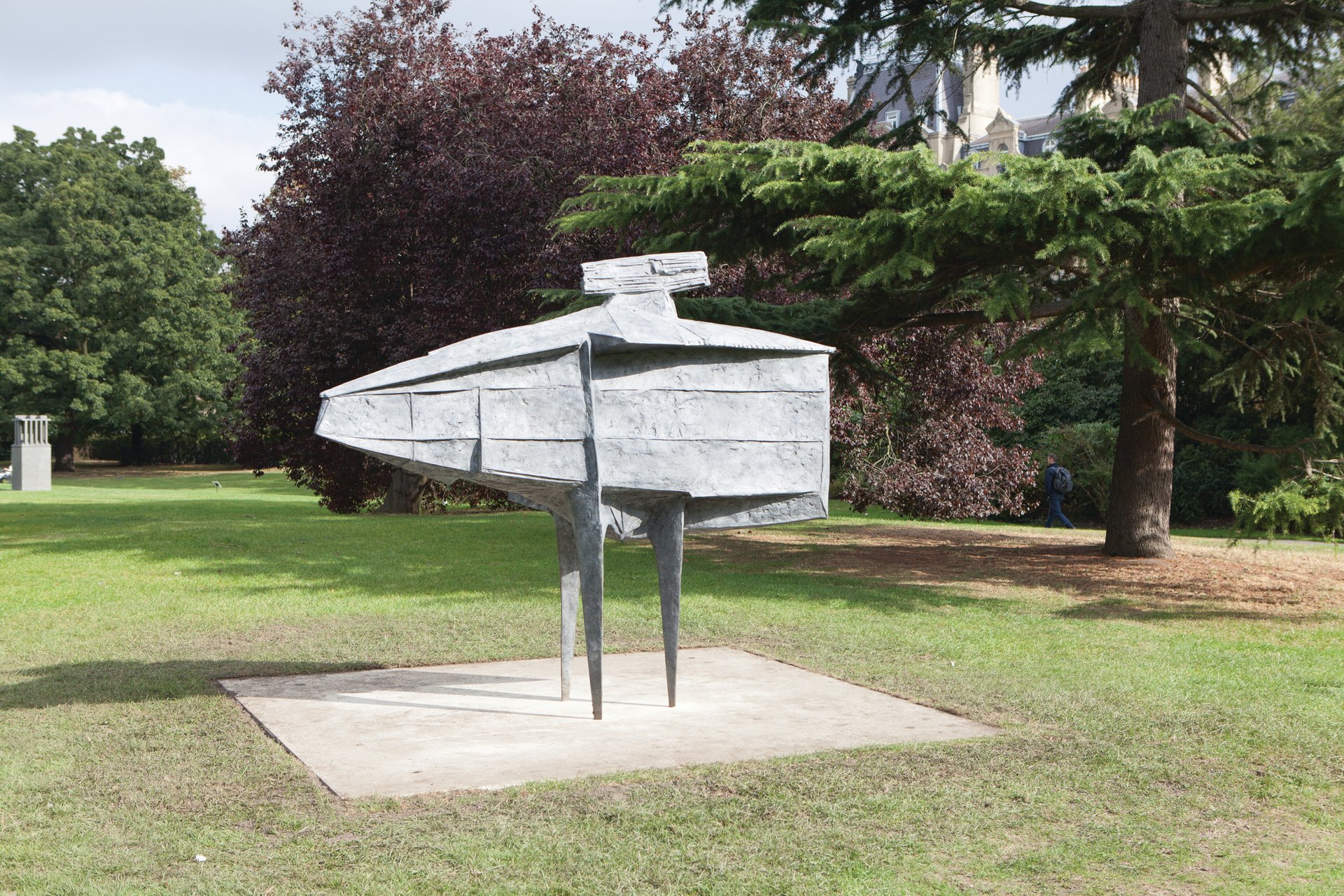
Lynn Chadwick, Stranger III (1959)
Blain Southern, £2m
Stranger III was originally commissioned by the Air League of the British Empire in 1957 for what was then London Airport, to commemorate John Alcock and Arthur Brown’s first non-stop transatlantic flight. But the sculpture was written off by the league as resembling ‘a diseased haddock’. Luckily, despite its rejection, Chadwick made a number of copies from the maquette before he died in 2003; the sculpture on show at Frieze is one of an edition of four. Chadwick was active over the north Atlantic during the Second World War, flying a Fairey Swordfish. You can see how Stranger III is influenced by elements of the biplane torpedo bomber.
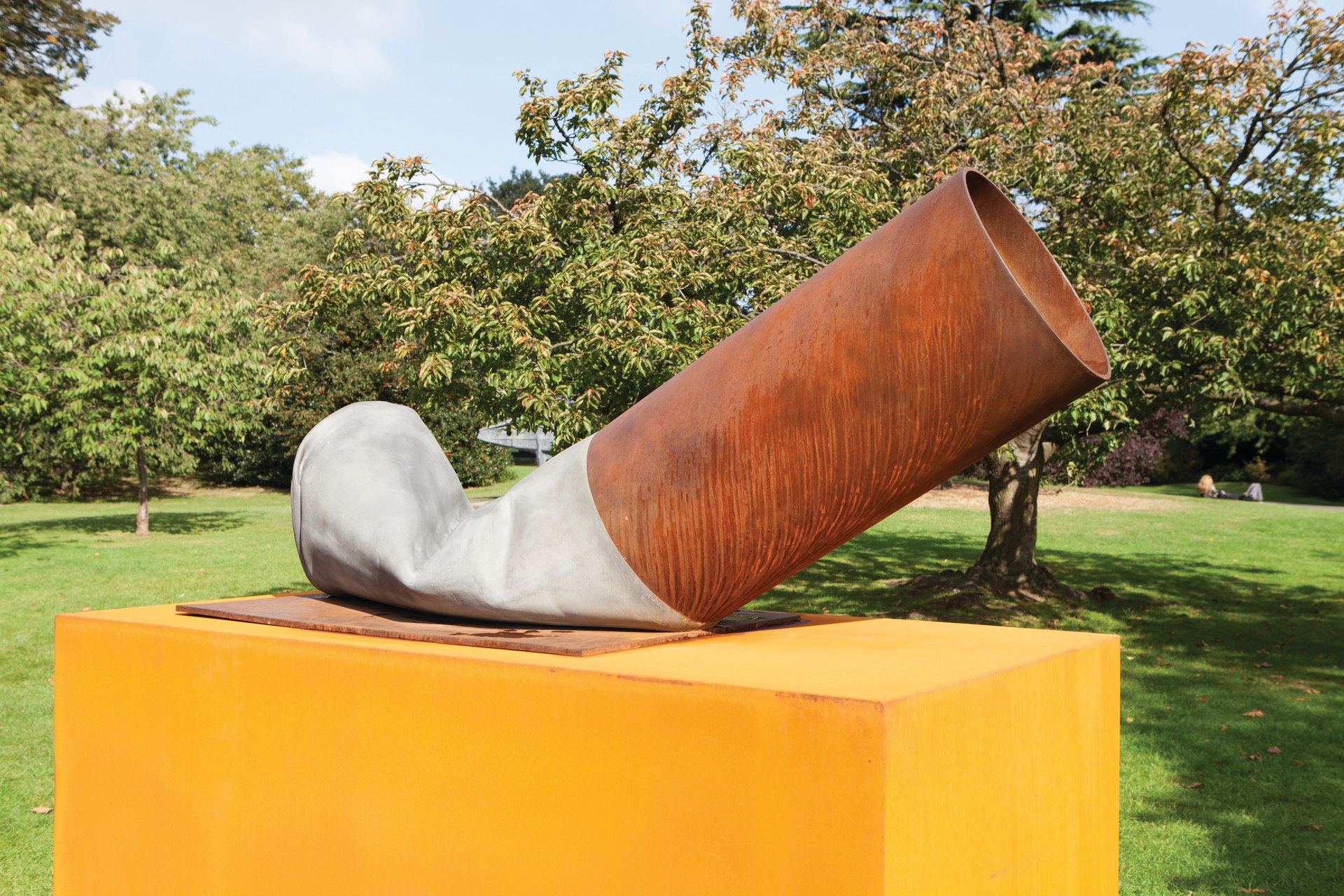
Claes Oldenburg, Fagend Study (1975)
Luxembourg & Dayan, around $2m
From the 1970s onwards, Claes Oldenburg was really concentrating on public commissions, and this is a study for one such large-scale sculpture. It’s easy to see Oldenburg’s work as very graphic, but if you look at this sculpture, you can see how extraordinarily well made it is, with a beautifully painted surface. In classic Oldenburg style, this cigarette stub is a bit of detritus raised up to become an autonomous work of art. One of the things that strikes me is how few fag ends you see nowadays; at the time Oldenburg made this, New York would have been littered with them.


